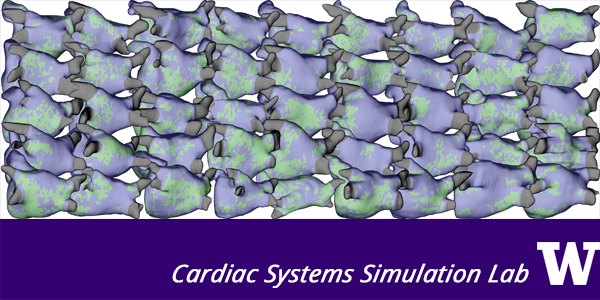Image: A collage of all 45 computational models representing the left atria of patients who suffered from embolic stroke of undetermined source. Stress tests performed on the simulated hearts triggered abnormal electrical activity (green).
Savannah F Bifulco, Griffin D Scott, Sakher Sarairah, Zeinab Birjandian, Caroline H Roney, Steven A Niederer, Christian Mahnkopf, Peter Kuhnlein, Marcel Mitlacher, David Tirschwell, W T Longstreth Jr, Nazem Akoum, Patrick M Boyle
eLife 2021; 10:e64213 DOI: 10.7554/eLife.64213
Abstract
Cardiac magnetic resonance imaging (MRI) has revealed fibrosis in embolic stroke of undetermined source (ESUS) patients comparable to levels seen in atrial fibrillation (AFib). We used computational modeling to understand the absence of arrhythmia in ESUS despite the presence of putatively pro-arrhythmic fibrosis. MRI-based atrial models were reconstructed for 45 ESUS and 45 AFib patients. The fibrotic substrate’s arrhythmogenic capacity in each patient was assessed computationally. Reentrant drivers were induced in 24/45 (53%) ESUS and 22/45 (49%) AFib models. Inducible models had more fibrosis (16.7±5.45%) than non-inducible models (11.07±3.61%; P<0.0001); however, inducible subsets of ESUS and AFib models had similar fibrosis levels (P=0.90), meaning the intrinsic pro-arrhythmic substrate properties of fibrosis in ESUS and AFib are indistinguishable. This suggests some ESUS patients have latent pre-clinical fibrotic substrate that could be a future source of arrhythmogenicity. Thus, our work prompts the hypothesis that ESUS patients with fibrotic atria are spared from AFib due to an absence of arrhythmia triggers.


